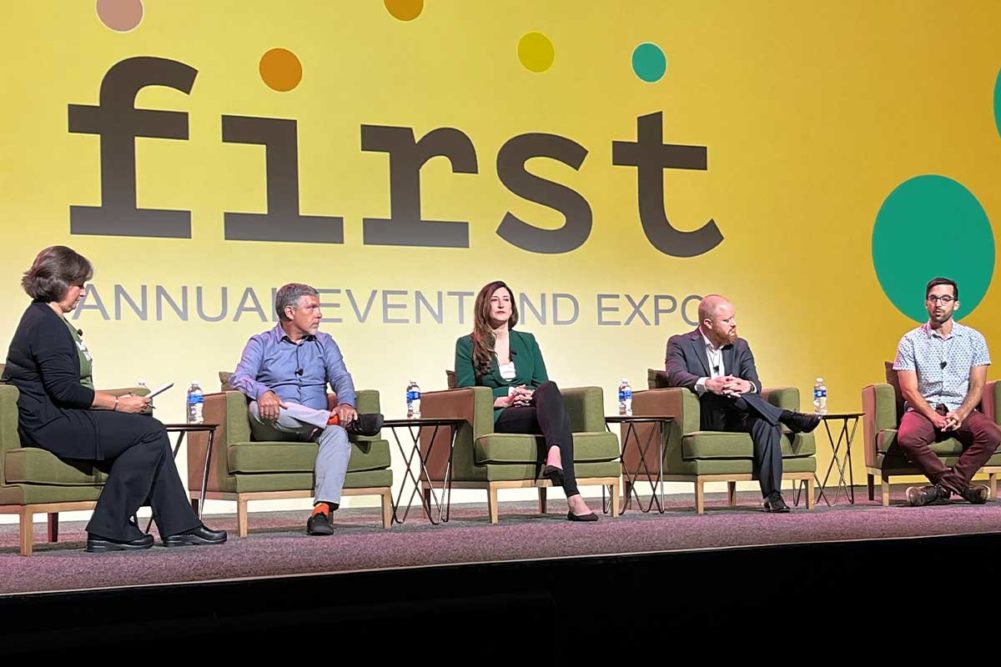CHICAGO — A panel of food waste and upcycling experts shared some sobering numbers during a panel discussion at IFT FIRST, held July 16-19, including that up to 25% of produce grown on farms globally goes unused.
“On-farm food loss is the largest portion of the food waste problem,” said Christine Moseley, founder and chief executive officer of Full Harvest, a company that is working to digitize the produce food industry and reduce this loss. “Food waste is the No. 1 contributor to climate change even over cars and cows.”
The session, “Reimagining Food Waste to Put the P in Profit and Loss,” included panelists working at companies dedicated to reversing food loss and upcycling ingredients.
“Currently, the produce industry is over 90% offline and because of that, it’s wildly inefficient and it has starved companies and farms from the data and transparency that’s needed to save time and money,” Ms. Moseley said. “We are digitizing it through the marketplace to incent growers to sell more and essentially be an incremental revenue stream for them to then access the up to 25% globally perfectly edible produce that is not being sold.”
Dan Kurzrock, CEO of Upcycled Foods Inc., said the market should be built on making sure all of the food grown gets eaten.
“Our status quo today … is food businesses finding the path of least resistance for what to do with their waste as opposed to the path of highest value,” he said.
One of the keys to using all ingredients is finding the right applications for these ingredients.
“A lot of these applications already exist,” explained Kyle Parker, procurement, MGM Marketing Inc. “The problem is we’re just not connecting to them, and we’re taking the easy path and going the disposal route. We are not actually valuing all of these materials.”
Mr. Kurzrock cited a report saying that while many organizations are committed to the UN’s sustainable goals around reducing food waste and hunger, only a small percentage feel as though they are on track to reach that goal.
“The desire is there, and the tools are there as well,” he said. “We just need to put them together to actually produce the outcome that we all want. It’s not always the easy thing but it can be done in a way that doesn’t need to be in a silo either.”
The panelists discussed finding the right messaging to help consumers and companies understand the value of these wasted ingredients and how upcycling is so important for the environment.
“How do we figure out what the right language is?” asked Chuck Templeton, senior managing director of S2G Ventures. “We have a couple of our companies thinking through what is the right message to consumers, and how do you get it across in a way that’s not negative and actually perceived as positive. I think consumers years ago were much more about the science around food and some of the products. The science is super important, the nutrition and all that, but it’s also now about what is the environmental aspect of food?”





